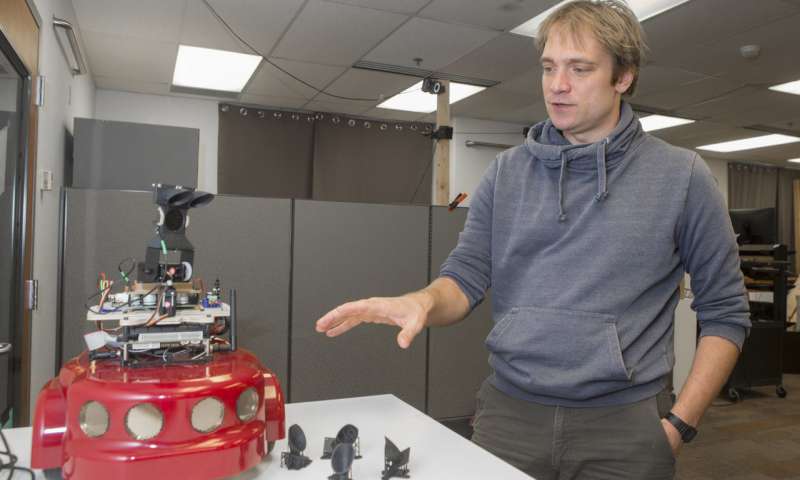Walls are what they are — big, dull dividers. With a few applications of conductive paint and some electronics, however, walls can become smart infrastructure that can sense human touch, detect gestures and detect when appliances are used.
These new capabilities might enable users to place or move light switches or other controls anywhere on a wall that is most convenient, or to control video games by using gestures. By monitoring activity in the room, this system could adjust light levels when a TV is turned on or alert a user in another location when a laundry machine or electric kettle turns off.

Researchers at Carnegie Mellon University and Disney Research found they could transform dull walls into smart walls at relatively low cost — about $20 per square meter — using simple tools and techniques, such as a paint roller.
Yang Zhang, a Ph.D. student in HCII, will present a research paper on this sensing approach, called Wall++, at CHI 2018, the Conference on Human Factors in Computing Systems, April 21-26 in Montreal, Canada.
The electrode wall can operate in two modes — capacitive sensing and electromagnetic sensing. In capacitive sensing, the wall functions like any other capacitive touchpad — when a person touches the wall, the touch distorts the wall’s electrostatic field at that point. In electromagnetic sensing mode, the electrode can detect the distinctive electromagnetic signatures of electrical or electronic devices, enabling the system to identify the devices and their locations.
Similarly, if a person is wearing a device that emits an electromagnetic signature, the system can track the location of that person, Zhang said. Wall++ hasn’t been optimized for energy consumption, Zhang said, but he estimated the wall-sized electrodes consume about as much power as a standard touch screen.








